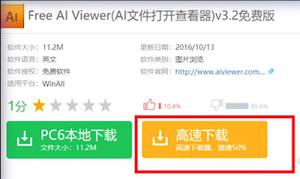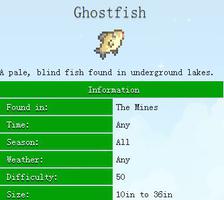TestinginSpringBoot

If you are new to Spring Boot, check out our intro to Spring Boot.
Injecting Mockito Mocks into Spring Beans
This article will show how to use dependency injection to insert Mockito mocks into Spring Beans for unit testing.
Read more →
2. Project Setup
The application we"re going to use in this article is an API that provides some basic operations on an Employee Resource. This is a typical tiered architecture – the API call is processed from the Controller to Service to the Persistence layer.
3. Maven Dependencies
Let"s first add our testing dependencies:
1
2
3
4
5
6
7
8
9
10
11
12
<
dependency
>
<
groupId
>org.springframework.boot</
groupId
>
<
artifactId
>spring-boot-starter-test</
artifactId
>
<
scope
>test</
scope
>
<
version
>2.1.6.RELEASE</
version
>
</
dependency
>
<
dependency
>
<
groupId
>com.h2database</
groupId
>
<
artifactId
>h2</
artifactId
>
<
scope
>test</
scope
>
<
version
>1.4.194</
version
>
</
dependency
>
The spring-boot-starter-test is the primary dependency that contains the majority of elements required for our tests.
The H2 DB is our in-memory database. It eliminates the need for configuring and starting an actual database for test purposes.
4. Integration Testing with @DataJpaTest
We"re going to work with an entity named Employee which has an id and a name as its properties:
1
2
3
4
5
6
7
8
9
10
11
12
13
@Entity
@Table
(name =
"person"
)
public
class
Employee {
@Id
@GeneratedValue
(strategy = GenerationType.AUTO)
private
Long id;
@Size
(min =
3
, max =
20
)
private
String name;
// standard getters and setters, constructors
}
And here"s our repository – using Spring Data JPA:
1
2
3
4
5
6
@Repository
public
interface
EmployeeRepository
extends
JpaRepository<Employee, Long> {
public
Employee findByName(String name);
}
That"s it for the persistence layer code. Now let"s head towards writing our test class.
First, let"s create the skeleton of our test class:
1
2
3
4
5
6
7
8
9
10
11
12
13
@RunWith
(SpringRunner.
class
)
@DataJpaTest
public
class
EmployeeRepositoryIntegrationTest {
@Autowired
private
TestEntityManager entityManager;
@Autowired
private
EmployeeRepository employeeRepository;
// write test cases here
}
@RunWith(SpringRunner.class) is used to provide a bridge between Spring Boot test features and JUnit. Whenever we are using any Spring Boot testing features in our JUnit tests, this annotation will be required.
@DataJpaTest provides some standard setup needed for testing the persistence layer:
- configuring H2, an in-memory database
- setting Hibernate, Spring Data, and the DataSource
- performing an @EntityScan
- turning on SQL logging
To carry out some DB operation, we need some records already setup in our database. To setup this data, we can use TestEntityManager. The TestEntityManager provided by Spring Boot is an alternative to the standard JPA EntityManager that provides methods commonly used when writing tests.
EmployeeRepository is the component that we are going to test. Now let"s write our first test case:
1
2
3
4
5
6
7
8
9
10
11
12
13
14
@Test
public
void
whenFindByName_thenReturnEmployee() {
// given
Employee alex =
new
Employee(
"alex"
);
entityManager.persist(alex);
entityManager.flush();
// when
Employee found = employeeRepository.findByName(alex.getName());
// then
assertThat(found.getName())
.isEqualTo(alex.getName());
}
In the above test, we"re using the TestEntityManager to insert an Employee in the DB and reading it via the find by name API.
The assertThat(…) part comes from the Assertj library which comes bundled with Spring Boot.
5. Mocking with @MockBean
Our Service layer code is dependent on our Repository. However, to test the Service layer, we do not need to know or care about how the persistence layer is implemented:
1
2
3
4
5
6
7
8
9
10
11
@Service
public
class
EmployeeServiceImpl
implements
EmployeeService {
@Autowired
private
EmployeeRepository employeeRepository;
@Override
public
Employee getEmployeeByName(String name) {
return
employeeRepository.findByName(name);
}
}
Ideally, we should be able to write and test our Service layer code without wiring in our full persistence layer.
To achieve this, we can use the mocking support provided by Spring Boot Test.
Let"s have a look at the test class skeleton first:
1
2
3
4
5
6
7
8
9
10
11
12
13
14
15
16
17
18
19
20
@RunWith
(SpringRunner.
class
)
public
class
EmployeeServiceImplIntegrationTest {
@TestConfiguration
static
class
EmployeeServiceImplTestContextConfiguration {
@Bean
public
EmployeeService employeeService() {
return
new
EmployeeServiceImpl();
}
}
@Autowired
private
EmployeeService employeeService;
@MockBean
private
EmployeeRepository employeeRepository;
// write test cases here
}
To check the Service class, we need to have an instance of Service class created and available as a @Bean so that we can @Autowire it in our test class. This configuration is achieved by using the @TestConfiguration annotation.
During component scanning, we might find components or configurations created only for specific tests accidentally get picked up everywhere. To help prevent that, Spring Boot provides @TestConfiguration annotation that can be used on classes in src/test/java to indicate that they should not be picked up by scanning.
Another interesting thing here is the use of @MockBean. It creates a Mock for the EmployeeRepository which can be used to bypass the call to the actual EmployeeRepository:
1
2
3
4
5
6
7
@Before
public
void
setUp() {
Employee alex =
new
Employee(
"alex"
);
Mockito.when(employeeRepository.findByName(alex.getName()))
.thenReturn(alex);
}
Since the setup is done, the test case will be simpler:
1
2
3
4
5
6
7
8
@Test
public
void
whenValidName_thenEmployeeShouldBeFound() {
String name =
"alex"
;
Employee found = employeeService.getEmployeeByName(name);
assertThat(found.getName())
.isEqualTo(name);
}
6. Unit Testing with @WebMvcTest
Our Controller depends on the Service layer; let"s only include a single method for simplicity:
1
2
3
4
5
6
7
8
9
10
11
12
@RestController
@RequestMapping
(
"/api"
)
public
class
EmployeeRestController {
@Autowired
private
EmployeeService employeeService;
@GetMapping
(
"/employees"
)
public
List<Employee> getAllEmployees() {
return
employeeService.getAllEmployees();
}
}
Since we are only focused on the Controller code, it is natural to mock the Service layer code for our unit tests:
1
2
3
4
5
6
7
8
9
10
11
12
@RunWith
(SpringRunner.
class
)
@WebMvcTest
(EmployeeRestController.
class
)
public
class
EmployeeRestControllerIntegrationTest {
@Autowired
private
MockMvc mvc;
@MockBean
private
EmployeeService service;
// write test cases here
}
To test the Controllers, we can use @WebMvcTest. It will auto-configure the Spring MVC infrastructure for our unit tests.
In most of the cases, @WebMvcTest will be limited to bootstrap a single controller. It is used along with @MockBean to provide mock implementations for required dependencies.
@WebMvcTest also auto-configures MockMvc which offers a powerful way of easy testing MVC controllers without starting a full HTTP server.
Having said that, let"s write our test case:
1
2
3
4
5
6
7
8
9
10
11
12
13
14
15
16
@Test
public
void
givenEmployees_whenGetEmployees_thenReturnJsonArray()
throws
Exception {
Employee alex =
new
Employee(
"alex"
);
List<Employee> allEmployees = Arrays.asList(alex);
given(service.getAllEmployees()).willReturn(allEmployees);
mvc.perform(get(
"/api/employees"
)
.contentType(MediaType.APPLICATION_JSON))
.andExpect(status().isOk())
.andExpect(jsonPath(
"$"
, hasSize(
1
)))
.andExpect(jsonPath(
"$[0].name"
, is(alex.getName())));
}
The get(…) method call can be replaced by other methods corresponding to HTTP verbs like put(), post(), etc. Please note that we are also setting the content type in the request.
MockMvc is flexible, and we can create any request using it.
7. Integration Testing with @SpringBootTest
As the name suggests, integration tests focus on integrating different layers of the application. That also means no mocking is involved.
Ideally, we should keep the integration tests separated from the unit tests and should not run along with the unit tests. We can do that by using a different profile to only run the integration tests. A couple of reasons for doing this could be that the integration tests are time-consuming and might need an actual database to execute.
However, in this article, we won"t focus on that and we"ll instead make use of the in-memory H2 persistence storage.
The integration tests need to start up a container to execute the test cases. Hence, some additional setup is required for this – all of this is easy in Spring Boot:
1
2
3
4
5
6
7
8
9
10
11
12
13
14
15
16
17
@RunWith
(SpringRunner.
class
)
@SpringBootTest
(
SpringBootTest.WebEnvironment.MOCK,
classes = Application.
class
)
@AutoConfigureMockMvc
@TestPropertySource
(
locations =
"classpath:application-integrationtest.properties"
)
public
class
EmployeeRestControllerIntegrationTest {
@Autowired
private
MockMvc mvc;
@Autowired
private
EmployeeRepository repository;
// write test cases here
}
The @SpringBootTest annotation can be used when we need to bootstrap the entire container. The annotation works by creating the ApplicationContext that will be utilized in our tests.
We can use the webEnvironment attribute of @SpringBootTest to configure our runtime environment; we"re using WebEnvironment.MOCK here – so that the container will operate in a mock servlet environment.
We can use the @TestPropertySource annotation to configure locations of properties files specific to our tests. Please note that the property file loaded with @TestPropertySource will override the existing application.properties file.
The application-integrationtest.properties contains the details to configure the persistence storage:
1
2
spring.datasource.url = jdbc:h2:mem:test
spring.jpa.properties.hibernate.dialect = org.hibernate.dialect.H2Dialect
If we want to run our integration tests against MySQL, we can change the above values in the properties file.
The test cases for the integration tests might look similar to the Controller layer unit tests:
1
2
3
4
5
6
7
8
9
10
11
12
13
@Test
public
void
givenEmployees_whenGetEmployees_thenStatus200()
throws
Exception {
createTestEmployee(
"bob"
);
mvc.perform(get(
"/api/employees"
)
.contentType(MediaType.APPLICATION_JSON))
.andExpect(status().isOk())
.andExpect(content()
.contentTypeCompatibleWith(MediaType.APPLICATION_JSON))
.andExpect(jsonPath(
"$[0].name"
, is(
"bob"
)));
}
The difference from the Controller layer unit tests is that here nothing is mocked and end-to-end scenarios will be executed.
8. Auto-Configured Tests
One of the amazing features of Spring Boot"s auto-configured annotations is that it helps to load parts of the complete application and test specific layers of the codebase.
In addition to the above-mentioned annotations here"s a list of a few widely used annotations:
- @WebFluxTest – we can use the @WebFluxTest annotation to test Spring Webflux controllers. It"s often used along with @MockBean to provide mock implementations for required dependencies.
- @JdbcTest – we can use the @JdbcTest annotation to test JPA applications but it"s for tests that only require a DataSource. The annotation configures an in-memory embedded database and a JdbcTemplate.
- @JooqTest – To test jOOQ-related tests we can use @JooqTest annotation, which configures a DSLContext.
- @DataMongoTest – To test MongoDB applications @DataMongoTest is a useful annotation. By default, it configures an in-memory embedded MongoDB if the driver is available through dependencies, configures a MongoTemplate, scans for @Document classes, and configures Spring Data MongoDB repositories.
- @DataRedisTest – makes it easier to test Redis applications. It scans for @RedisHash classes and configures Spring Data Redis repositories by default.
- @DataLdapTest – configures an in-memory embedded LDAP (if available), configures a LdapTemplate, scans for @Entry classes, and configures Spring Data LDAP repositories by default
- @RestClientTest – we generally use the @RestClientTest annotation to test REST clients. It auto-configures different dependencies like Jackson, GSON, and Jsonb support, configures a RestTemplateBuilder, and adds support for MockRestServiceServer by default.
9. Conclusion
In this tutorial, we took a deep dive into the testing support in Spring Boot and showed how to write unit tests efficiently.
The complete source code of this article can be found over on GitHub. The source code contains many more examples and various test cases.
And, if you want to keep learning about testing – we have separate articles related to integration tests and unit tests in JUnit 5.
以上是 TestinginSpringBoot 的全部内容, 来源链接: utcz.com/z/513052.html









